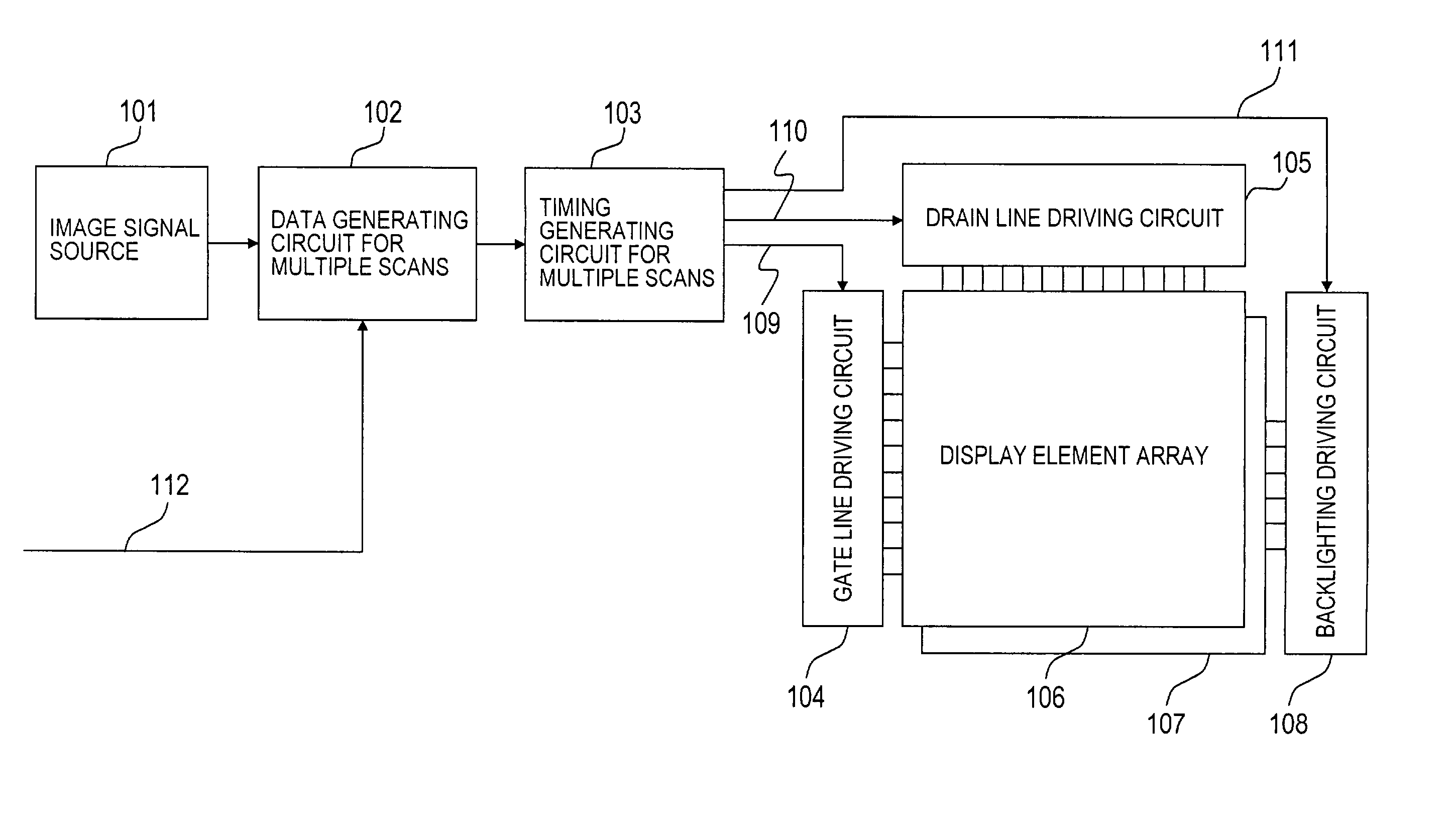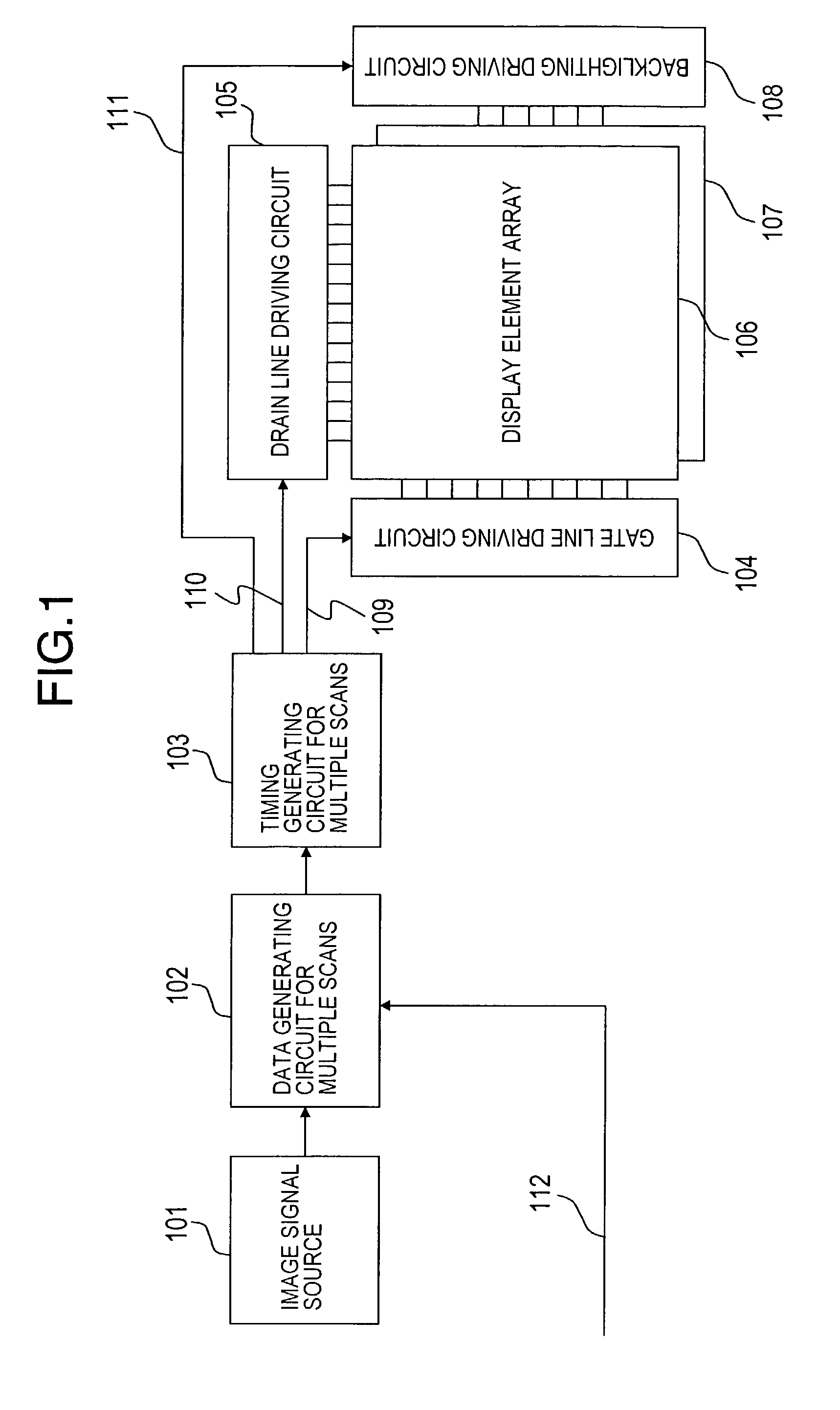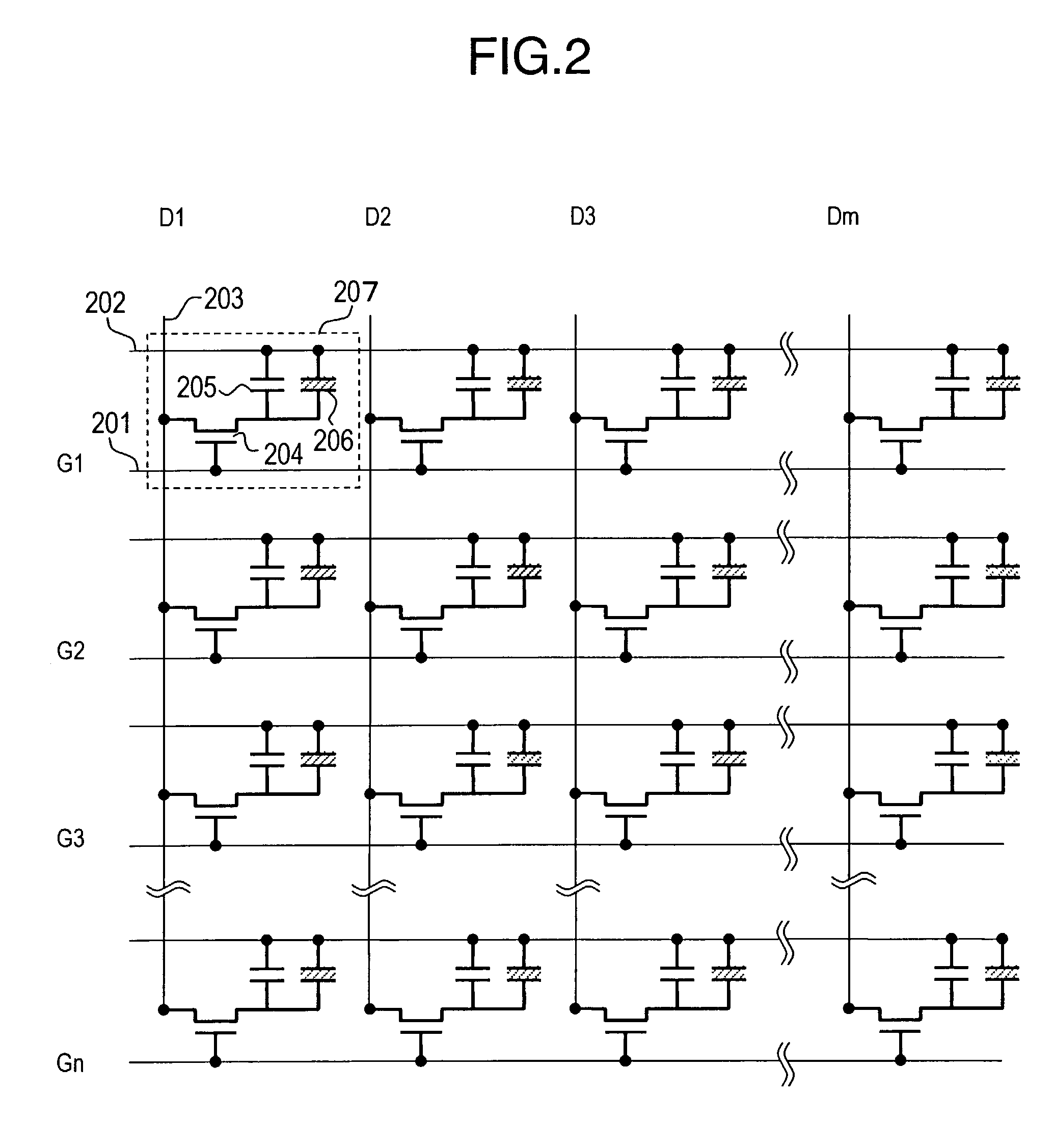Matrix-type display device
a display device and matrix-type technology, applied in the field of matrix-type display devices, can solve the problems of increased parts and manufacturing costs, increased construction complexity, increased cost of parts and manufacturing,
- Summary
- Abstract
- Description
- Claims
- Application Information
AI Technical Summary
Benefits of technology
Problems solved by technology
Method used
Image
Examples
first embodiment
[0155] FIG. 43 shows an example where 60 Hz of the frame rate 120 Hz obtained by the above-described scanning is assigned to the blanking data display. In this case, the scanning is performed in the same manner as that in the first embodiment, which is effective for improving the quality in moving pictures. The scanning can be more flexible if a scanning circuit can be obtained whereby the number of synchronous writing scanning lines and the number of interlace scanning lines can be set randomly for each horizontal scanning period.
FIFTH EXAMPLE
[0156] FIG. 44 shows an example of scanning at the double frame frequency 120 Hz, which is obtained by the two-line synchronous writing and the two-line interlace scanning. In this example, each of screens is divided into the upper half and lower half portions. One of the portions is used for image writing, and the other half portion is used for blanking data writing. The image writing and the blanking data writing are performed at 120 Hz alte...
sixth example
[0158] FIG. 45 shows an example of scanning at the double frame frequency 120 Hz, which is obtained by the two-line synchronous writing and the two-line interlace scanning. In this example, each of screens is divided into the right half and left half portions. One of the portions is used for image writing, and the other half portion is used for blanking data writing. The image writing and the blanking data writing are performed at 120 Hz alternately. Unlike the black display on the entire screen in the first example, the spatial modulation is performed on the black display in the sixth example. Thus, the performance for moving image display is maintained while the flicker can be reduced.
[0159] Incidentally, the spatial modulation may be performed for the black vertical stripe display having horizontal four divisions and horizontal six divisions, respectively, in one screen. Also in this case, the black vertical stripe display is switched at 120 Hz. Thus, the flicker can be reduced m...
seventh example
[0160] FIG. 46 shows an example of scanning at the double frame frequency 120 Hz, which is obtained by the two-line synchronous writing and the two-line interlace scanning. In this example, each of screens is divided into vertical and horizontal four portions. A pair of the diagonal portions is used for image writing, and the other pair of the diagonal portions is used for blanking data writing. The image writing and the blanking data writing are performed at 120 Hz alternately. Unlike the black display on the entire screen in the first example, the spatial modulation is performed on the black display. Thus, the performance for moving image display is maintained while the flicker can be reduced.
[0161] Incidentally, the spatial modulation may be performed for the black checker pattern display having total of sixteen divisions each having vertical and horizontal four divisions or the black checker pattern display having total of thirty-six divisions each having vertical and horizontal...
PUM
| Property | Measurement | Unit |
|---|---|---|
| aspect ratio | aaaaa | aaaaa |
| aspect ratio | aaaaa | aaaaa |
| aspect ratio | aaaaa | aaaaa |
Abstract
Description
Claims
Application Information
 Login to View More
Login to View More - R&D
- Intellectual Property
- Life Sciences
- Materials
- Tech Scout
- Unparalleled Data Quality
- Higher Quality Content
- 60% Fewer Hallucinations
Browse by: Latest US Patents, China's latest patents, Technical Efficacy Thesaurus, Application Domain, Technology Topic, Popular Technical Reports.
© 2025 PatSnap. All rights reserved.Legal|Privacy policy|Modern Slavery Act Transparency Statement|Sitemap|About US| Contact US: help@patsnap.com



